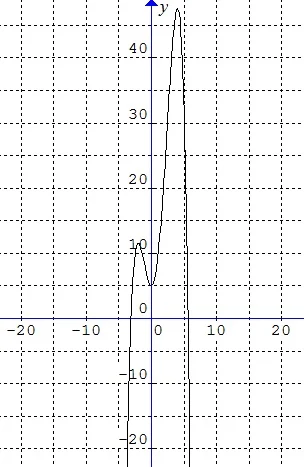A. Turunan Fungsi Aljabar
A. 1 Laju Perubahasan untuk Nilai Fungsi
Konsep turunan fungsi pada awalnya digunakan dalam bidang kususnya Matematika dan fisika, dalam hal hal ini kita berikan contohnya adalah laju perubahan kecepatan.
Coba perhatikanlah, misal pada kasus gerak jatuh bebas suatu benda yang dinyaatakan dengan $\color{red}h=\color{black}\displaystyle \frac{1}{2}gt^{2}$ dengan $\color{red}h$ adalah tinggi benda dengan percepatan grafitasinya adalah $\color{red}g=\color{black}10\: \: m/s^{2}$ dan $\color{red}t$ adalah waktu tempuh.
Misalkan suatu benda jatuh dari ketinggian 125 meter dari permukaan tanah dengan percepatan grafitasinya adalah $g=10\: \: m/s^{2}$, maka waktu yang dibutuhkan benda tersebut untuk sampai ke tanah adalah:
$\begin{aligned}h&=\displaystyle \frac{1}{2}gt^{2}\\ 125&= \frac{1}{2}(10)t^{2}\\ 25&=t^{2}\\ 5&=t \end{aligned}$
Dari kejadian di atas dapat kita dapatkan kecepatan rata-ratanya yaitu: perubahan tinggi dibagi perubahan waktu terjadinya, atau misal dituliskan
$\bigtriangleup v=\displaystyle \frac{\bigtriangleup y}{\bigtriangleup t}=\displaystyle \frac{y_{n}-y_{1}}{t_{n}-t_{1}}$
Sehingga kecepatan rata-ratanya adalah : $\color{purple}\displaystyle \frac{125}{5}=25\: \: m/s^{2}$
Misalkan $\color{blue}f(t)$ untuk fungsi yang menujukkan posisi benda yang terjatuh dalam $\color{blue}t$ dengan $\color{blue}f(t)=5t^{2}$, maka kecepatan rata-ratanya kita dapat menghitungnya untuk beberapa selang termasuk kita dapat menghitung kecepatan sesaatnya.
Coba perhatikanlah tabel berikut:
$\begin{array}{|l|l|}\hline \begin{cases} f(4) &=5.4^{2}=80 \\ f(3) &= 5.3^{2}=45 \end{cases}&\color{purple}\begin{aligned}\bigtriangleup v&=\displaystyle \frac{80-45}{4-3}\\ &=\displaystyle \frac{35}{1}=35 \end{aligned}\\\hline \begin{cases} f(3,5) &=5.(3,5)^{2}=61,25 \\ f(3) &= 5.3^{2}=45 \end{cases}&\color{purple}\begin{aligned}\bigtriangleup v&=\displaystyle \frac{61,25-45}{3,5-3}\\ &=\displaystyle \frac{16,25}{0,5}=32,5 \end{aligned}\\\hline \begin{cases} f(3,25) &=5.(3,25)^{2}= \\ f(3) &= 5.3^{2}=45 \end{cases}&\color{purple}\begin{aligned}\bigtriangleup v&=\displaystyle \frac{52,8125-45}{3,25-3}\\ &=\displaystyle \frac{7,8125}{0,25}=31,25 \end{aligned}\\\hline \begin{cases} f(3,1) &=5.(3,1)^{2}=48,05 \\ f(3) &= 5.3^{2}=45 \end{cases}&\color{purple}\begin{aligned}\bigtriangleup v&=\displaystyle \frac{48,05-45}{3,1-3}\\ &=\displaystyle \frac{3,05}{0,1}=30,5 \end{aligned}\\\hline \begin{cases} f(3,1) &=5.(3,01)^{2}=45,3005 \\ f(3) &= 5.3^{2}=45 \end{cases}&\color{purple}\begin{aligned}\bigtriangleup v&=\displaystyle \frac{45,3005-45}{3,01-3}\\ &=\displaystyle \frac{0,3005}{0,01}=30,05 \end{aligned}\\\hline \end{array}$
Dari ilsutrasi tabel di atas jika selisih waktu diperkecil terus menerus sampai mendekati nol, maka kecepatan sesaatnya akan mendekati nilai 30.
Sehingga kecepatan ketika $t=3$ ditentukan sebagai laju perubahan jarak terhadap waktu yang dibutuhkan dapat dituliskan dengan:
$\begin{array}{|c|c|}\hline \textrm{Laju perubahan rata-rata}&\textrm{Laju perubahan sesaat}\\\hline \begin{aligned}&\\ &\displaystyle \frac{\Delta y}{\Delta x}=\displaystyle \frac{f\left ( x_{2} \right )-f\left ( x_{1} \right )}{x_{2}-x_{1}}\\ & \end{aligned}&\begin{aligned}&\\ &\underset{h\rightarrow 0}{\textrm{Lim}}\: \: \displaystyle \frac{f(a+h)-f(a)}{h}\\ & \end{aligned}\\\hline \end{array}$.
Selanjutnya jika benda jatuh yang memenuhi kasus di atas, jika dihitung dengan pendekatan ini saat $t=3$ adalah:
$\color{red}\begin{aligned}\underset{h\rightarrow 0}{\textrm{Lim}}\: \: \displaystyle \frac{f(t+h)-f(t)}{h}&=\underset{h\rightarrow 0}{\textrm{Lim}}\: \: \displaystyle \frac{5(t+h)^{2}-5t^{2}}{h}\\ &=\underset{h\rightarrow 0}{\textrm{Lim}}\: \: \displaystyle \frac{5\left ( t^{2}+2th+h^{2} \right )-5t^{2}}{h}\\ &=\underset{h\rightarrow 0}{\textrm{Lim}}\: \: \displaystyle \frac{5t^{2}+10th+5h^{2}-5t^{2}}{h}\\ &=\underset{h\rightarrow 0}{\textrm{Lim}}\: \: \displaystyle \frac{10th+5h^{2}}{h}\\ &=\underset{h\rightarrow 0}{\textrm{Lim}}\: \: 10t+5h\\ &=10t \end{aligned}$
Dari saat $t=3$ kecepatan sesaatnya adalah $10t=10(3)=30\: \: m/s^{2}$.
Secara matematis, perubahan laju terhadap suatu fungsi di $x=a$ selanjutnya dinotasikan dengan $f'(x)$ dan didefiniskan dengan:
$\LARGE\color{purple}\boxed{f'(x)=\underset{h\rightarrow 0}{\textrm{Lim}}\: \: \displaystyle \frac{f(x+h)-f(x)}{h}}$
Bentuk di atas dinamakan dengan derivatif atau turunan pertama pada fungsi $f(x)$ dan dinotasikan dengan $f'(x)$ dan proses pencarian derivatif ini dinamakan differensial.
$\LARGE\colorbox{yellow}{CONTOH SOAL}$.
$\begin{array}{ll}\\ 1.&\textrm{Jika} \: \: g(x)=3x-5, \textrm{hitunglah laju perubahan }\\ &\textrm{fungsi}\: \: g\: \: \textrm{di}\: \: x=2\\ &\\ &\textbf{Jawab}:\\ &\textrm{Diketahui bahwa}\: \: \color{blue}g(x)=3x-5\\ &\begin{array}{|c|c|}\hline \color{purple}\textrm{Cara Pertama}&\color{purple}\textrm{Cara Kedua}\\\hline \begin{aligned} g(x)&=3x-5\\ g(2)&=3.2-5=1\\ {g}'(2)&=\underset{x\rightarrow 2}{\textrm{Lim}}\: \: \displaystyle \frac{g(x)-g(2)}{x-2}\\ &=\underset{x\rightarrow 2}{\textrm{Lim}}\: \: \displaystyle \frac{(3x-5)-(1)}{x-2}\\ &=\underset{x\rightarrow 2}{\textrm{Lim}}\: \: \displaystyle \frac{3x-6}{x-2}\\ &=\underset{x\rightarrow 2}{\textrm{Lim}}\: \: \displaystyle 3\\ &=\color{red}3 \end{aligned}&\begin{aligned}g(2)\: \,&=1\\ g(2+&h)=3(2+h)-5=3h+1\\ g(2+&h)-g(2)=3h\\ {g}'(2)\: &=\underset{h\rightarrow 0}{\textrm{Lim}}\: \: \displaystyle \frac{g(2+h)-g(2)}{h}\\ &=\underset{h\rightarrow 0}{\textrm{Lim}}\: \: \displaystyle\frac{3h}{h}\\ &=\underset{h\rightarrow 0}{\textrm{Lim}}\: \: 3\\ &=\color{red}3\\ & \end{aligned}\\\hline \end{array} \\ &\textrm{Jadi, laju perubahan fungsi}\: \: g\: \: \textrm{di}\: \: x=2\: \: \textrm{adalah}\: \color{red}3 \end{array}$.
$\begin{array}{ll}\\ 2.&\textrm{Diketahui}\: \: f(x)=2022x^{2},\: \: \textrm{tentukanlah}\: \: {f}'(x)\: \: \textrm{dan}\: \: {f}'(1)\\ &\\ &\textbf{Jawab}:\\ &\begin{array}{|c|c|}\hline {f}'(x)&{f}'(1)\\\hline \color{purple}\begin{aligned}f(x)&=2022x^{2}\\ f(x+h)&=2022(x+h)^{2}\\ &=2022\left ( x^{2}+2xh+h^{2} \right )\\ &=2022x^{2}+4044xh+2022h^{2}\\ {f}'(x)&=\underset{h\rightarrow 0}{\textrm{Lim}}\: \: \displaystyle \frac{f(x+h)-f(x)}{h}\\ &=\underset{h\rightarrow 0}{\textrm{Lim}}\: \: \displaystyle \frac{\left (2022x^{2}+4044xh+2022h^{2} \right )-\left (2022x^{2} \right )}{h}\\ &=\underset{h\rightarrow 0}{\textrm{Lim}}\: \: \displaystyle \frac{4044xh+2022h^{2}}{h}\\ &=\underset{h\rightarrow 0}{\textrm{Lim}}\: \: \displaystyle 4044x+2022h\\ &=4044x \end{aligned}&\begin{aligned}{f}'(x)&=4044x\\ \textrm{maka},&\\ {f}'(1)&=4044.1\\ &=\color{red}4044\\ &\\ &\\ &\\ &\\ &\\ &\\ & \end{aligned}\\\hline \end{array}\end{array}$.
$\begin{array}{ll}\\ 3.&\textrm{Tentukanlah kecepatan jika diketahui}\: \: f(t)=\sin t\\ &\textrm{saat}\: \: t\\\\ &\textrm{Jawab}:\\ &\color{purple}\begin{aligned}f'(t)=v(t)&=\underset{h\rightarrow 0}{\textrm{Lim}}\: \: \displaystyle \frac{f(t+h)-f(t)}{h}\\ &=\underset{h\rightarrow 0}{\textrm{Lim}}\: \: \displaystyle \frac{\sin (t+h)-\sin t}{h}\\ &=\underset{h\rightarrow 0}{\textrm{Lim}}\: \: \displaystyle \frac{2\cos \displaystyle \frac{1}{2}(2t+h)\sin \displaystyle \frac{1}{2}h}{h}\\ &=\underset{h\rightarrow 0}{\textrm{Lim}}\: \: 2\cos \displaystyle \frac{1}{2}(2t+h).\displaystyle \frac{\sin \displaystyle \frac{1}{2}h}{h}\\ &=\underset{h\rightarrow 0}{\textrm{Lim}}\: \: \displaystyle 2\cos \displaystyle \frac{1}{2}(2t+h)\times \displaystyle \frac{1}{2}\\ &=2\cos \displaystyle \frac{1}{2}(2t+0)\times \displaystyle \frac{1}{2}\\ &=\cos \displaystyle \frac{1}{2}(2t)\\ &=\cos t \end{aligned} \end{array}$
$\begin{array}{ll}\\ 4.&\textrm{Diketahui sebuah bola bergerak melingkar beraturan}\\ &\textrm{dengan persamaan}\: \: f(t)=2\sin 2t.\: \textrm{Tentukanlah}\\ &\textrm{kecepatan bola saat}\: \: t=\displaystyle \frac{1}{12}\pi \\\\ &\textrm{Jawab}:\\ &\color{purple}\begin{aligned}v(t)&=\underset{h\rightarrow 0}{\textrm{Lim}}\: \: \displaystyle \frac{f(t+h)-f(t)}{h}\\ &=\underset{h\rightarrow 0}{\textrm{Lim}}\: \: \displaystyle \frac{4\sin 2(t+h)-2\sin 2t}{h}\\ &=\underset{h\rightarrow 0}{\textrm{Lim}}\: \: \displaystyle \frac{4\cos \displaystyle \frac{1}{2}(4t+2h)\sin \displaystyle \frac{1}{2}(2h)}{h}\\ &=\underset{h\rightarrow 0}{\textrm{Lim}}\: \: 4\cos \displaystyle \frac{1}{2}(4t+2h)\times \underset{h\rightarrow 0}{\textrm{Lim}}\: \: \displaystyle \frac{\sin h}{h}\\ &=4\cos \displaystyle \frac{1}{2}(4t)\\ &=4\cos 2t\\ v\left ( \displaystyle \frac{1}{12}\pi \right )&=4\cos 2\left ( \displaystyle \frac{1}{12}\pi \right )\\ &=4\cos \displaystyle \frac{1}{6}\pi\\ &=4\left ( \displaystyle \frac{1}{2}\sqrt{3} \right ) \\ &=2\sqrt{3} \end{aligned} \end{array}$
DAFTAR PUSTAKA
- Noormandiri, B. K. 2004. Matematika SMA Jilid $2^{A}$ Berdasarkan Kurikulum 2004. Jakarta: ERLANGGA.
- Noormandiri, B. K. 2017. Matematika Jilid 3 untuk SMA/MA Kelas XII Kelompok Peminatan Matematika dan Ilmu-Ilmu Alam. Jakarta: ERLANGGA.






